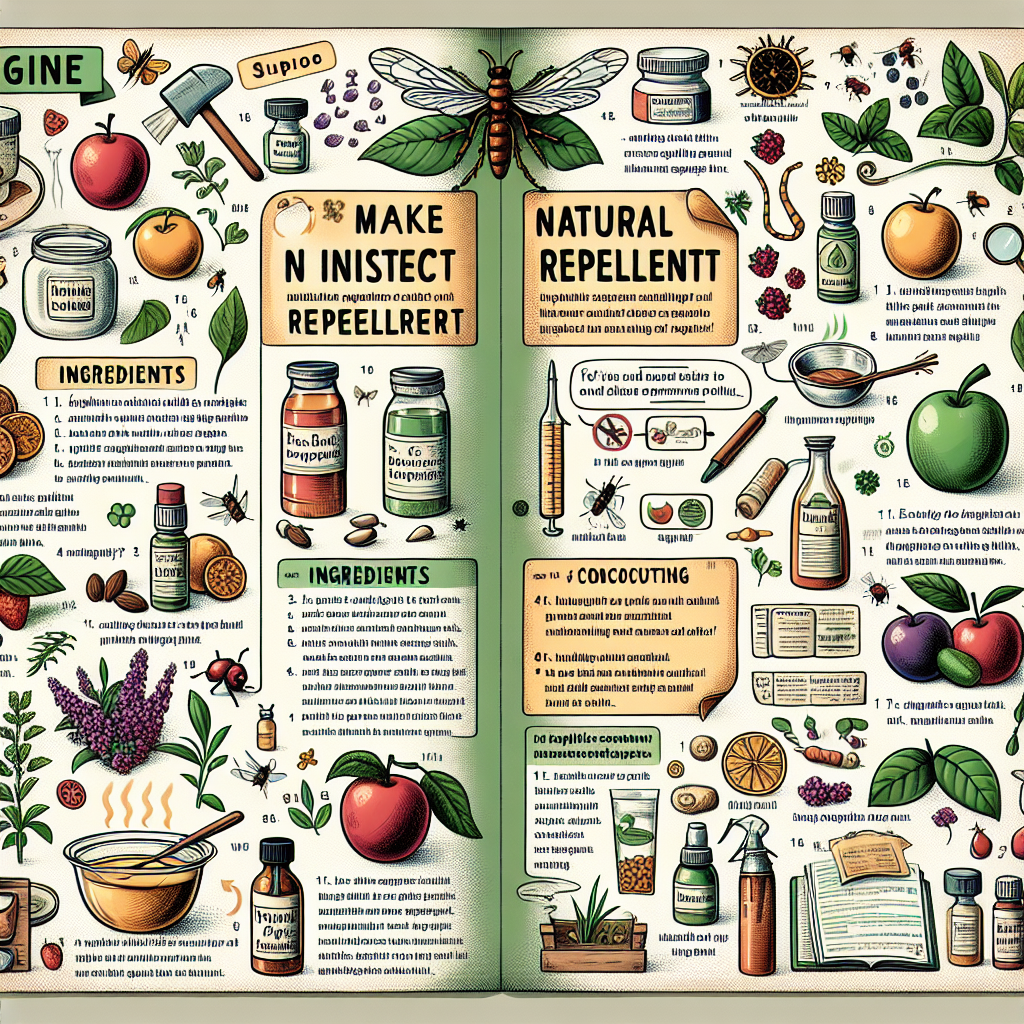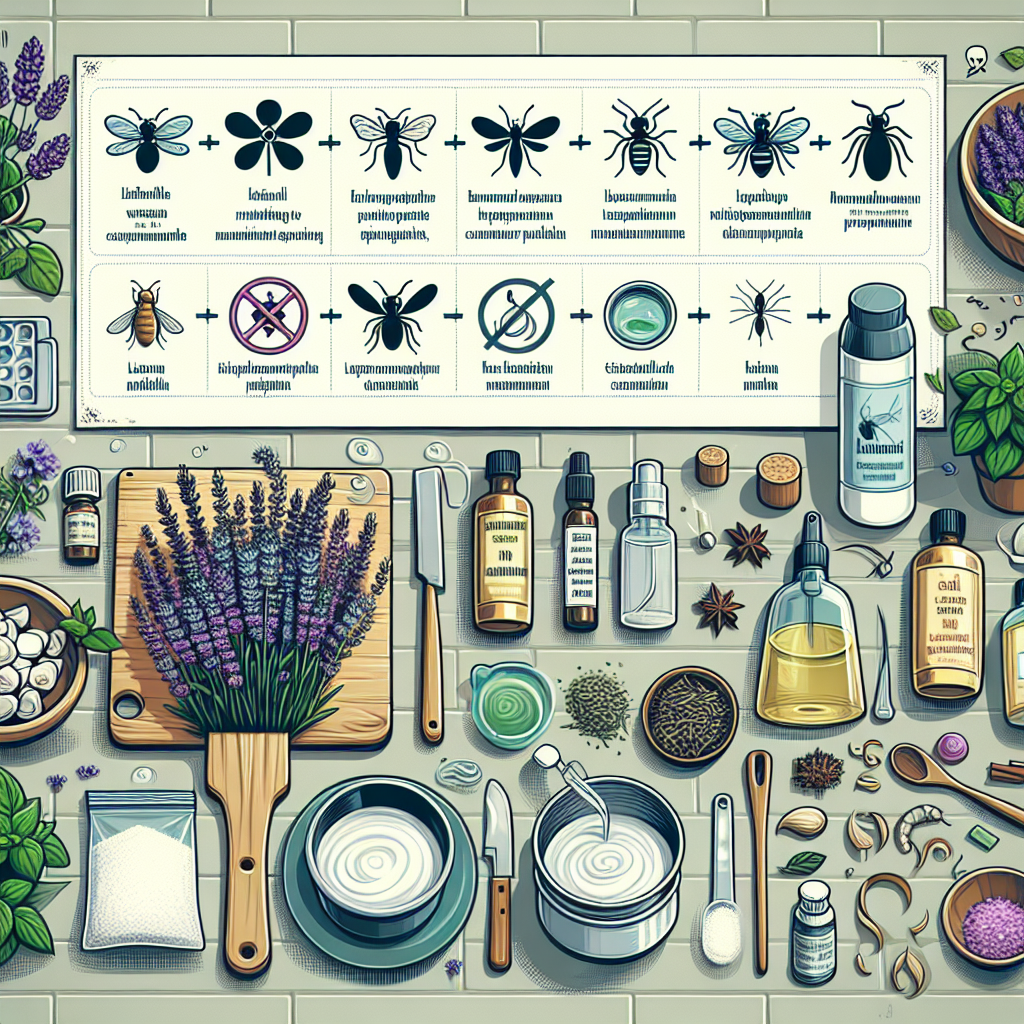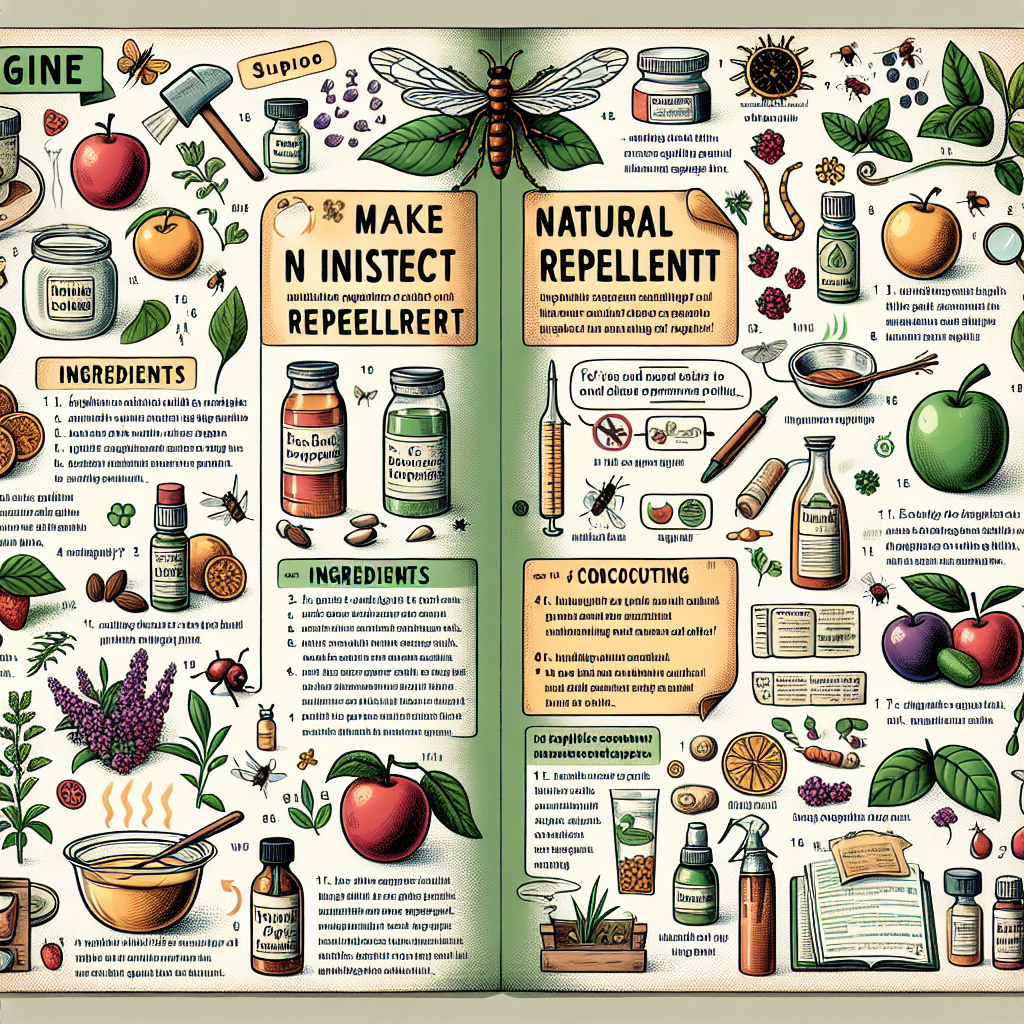Are pesky insects ruining your outdoor activities? If so, we’ve got just the solution for you: natural insect repellent! In this article, we’ll show you the simple steps to create your very own bug repellent using ingredients you probably already have at home. Say goodbye to those irritating bites and hello to a bug-free, enjoyable time outdoors. So, grab your supplies and let’s get started on making your own natural insect repellent!
Choosing the Right Ingredients
When it comes to making your own natural insect repellent, the first step is to determine the type of insects you want to repel. Different insects are repelled by different ingredients, so it’s important to identify the specific pests you are targeting. Whether you’re dealing with mosquitoes, flies, or ants, knowing the specific insects will help you choose the most effective ingredients.
Once you know the type of insects you want to repel, the next step is to identify natural ingredients with repellent properties. Essential oils are a popular choice for natural insect repellents due to their potency and effectiveness. There are several essential oils known for their insect-repelling qualities, such as citronella, lemongrass, eucalyptus, and lavender. These oils not only repel insects but also have a pleasant aroma.
Essential Oils as Insect Repellents
When selecting essential oils for your homemade insect repellent, it’s important to choose oils that have insect-repelling qualities. Some essential oils are more potent than others when it comes to repelling insects, so understanding their different potency levels is key. For example, citronella oil is highly effective against mosquitoes, while lavender oil is more effective against flies and ants.
To achieve optimal effectiveness, it’s recommended to create a blend of essential oils. Blending different oils can enhance their repellent properties and broaden the range of insects they repel. Experimenting with different oil combinations will help you find the perfect blend that suits your needs.

Carrier Oils and Dilution
In addition to essential oils, carrier oils play a crucial role in homemade insect repellents. Carrier oils not only dilute essential oils but also help to spread them evenly on the skin. When choosing a carrier oil, options like coconut oil, jojoba oil, and almond oil are popular choices. These oils are easily absorbed by the skin and have their own nourishing properties.
To ensure the safety and effectiveness of your homemade insect repellent, it’s important to calculate the appropriate dilution ratio. Most essential oils should be diluted in a carrier oil to avoid skin irritation. The recommended dilution ratio is typically around 2-5% essential oil to carrier oil, depending on the potency of the essential oil and the age of the user.
Adding Additional Ingredients
To boost the repellent power of your homemade insect repellent, you can incorporate herbs and spices. Certain herbs and spices, such as peppermint, rosemary, and cinnamon, are known for their insect-repelling properties. Adding these ingredients can further enhance the effectiveness of your repellent and provide a pleasant aroma.
Another consideration when making your own insect repellent is to include scent-masking agents. While essential oils can repel insects, their strong aroma can also attract more insects. By adding scent-masking agents, such as vanilla extract or citronella candles, you can mask the scent of the repellent and avoid drawing more insects to you.

Homemade Insect Repellent Recipes
Now that you have a good understanding of the essential ingredients, it’s time to explore some homemade insect repellent recipes. A basic recipe consists of essential oils and a carrier oil. Simply mix a few drops of your chosen essential oils with a carrier oil of your preference, and you have a natural insect repellent ready to use.
For different insects and skin types, variations of the basic recipe can be made. For example, if you’re targeting mosquitoes, a blend of citronella, lemongrass, and lavender oils can be used. For sensitive skin, a milder blend of lavender and tea tree oil with a gentle carrier oil like almond oil can be suitable.
If you prefer a spray version of the repellent, you can easily make your own DIY insect repellent spray. Simply combine your chosen essential oils, carrier oil, and a small amount of alcohol (such as vodka) in a spray bottle. Shake well before each use, and you have a convenient spray repellent for outdoor activities.
Application and Usage Tips
To ensure the effectiveness of your homemade insect repellent, proper application techniques are important. Apply the repellent evenly on exposed skin, focusing on areas that are more susceptible to insect bites, such as ankles and wrists. Avoid applying near the eyes, mouth, and any open wounds.
The frequency and timing of reapplication may vary depending on your activity level and the effectiveness of the repellent. It’s generally recommended to reapply every few hours or as needed, especially if you’re sweating or swimming. Be aware of any signs of insect bites and reapply accordingly.
It’s important to note that sensitive individuals may react differently to natural insect repellents. If you have sensitive skin or have experienced any adverse reactions in the past, it’s best to perform a patch test on a small area of skin before applying the repellent to a larger area. This will help you determine if you have any sensitivities or allergies to the ingredients.
Storing and Shelf Life
Choosing suitable storage containers for your homemade insect repellent is essential to maintain its quality over time. Glass bottles or jars with a tight-fitting lid are recommended to prevent oxidation and preserve the potency of the essential oils. Keep the container in a cool, dark place to avoid exposure to heat and sunlight.
To prolong the shelf life of your homemade insect repellent, there are a few tips to keep in mind. Use fresh ingredients whenever possible and avoid using expired oils or carrier oils. Additionally, keep the repellent away from extreme temperatures, as this can degrade the quality of the oils. By following these tips, you can extend the lifespan of your homemade repellent.
Testing and Adjusting the Repellent
Before using the homemade insect repellent on a larger area of skin, it’s always a good idea to perform a sensitivity test. Apply a small amount of the repellent to a small area of skin, like the inner forearm, and monitor for any adverse reactions for at least 24 hours. If there are no signs of irritation, the repellent is likely safe to use.
If you find that the repellent isn’t as effective as you would like, consider adjusting the recipe. You can try increasing the concentration of essential oils or using different essential oils with stronger repellent properties. It’s important to experiment and find a combination that works best for you and the specific insects you’re targeting.
Alternative Natural Insect Repellents
In addition to homemade insect repellents, there are other natural alternatives you can explore. Using natural repellent plants is a great option, as certain plants have inherent insect-repelling properties. Plants like citronella, lemongrass, and marigolds can be grown in your garden or placed near windows and entryways to naturally repel insects.
If you prefer a ready-to-use option, making vinegar-based repellents can be effective. Simply mix equal parts of vinegar and water in a spray bottle and apply to skin or surfaces where insects are present. The strong odor of vinegar deters insects and can be an affordable and accessible option for repelling pests.
When exploring alternative natural insect repellents, it’s important to do thorough research and consider factors such as effectiveness and personal preferences.
Benefits of Natural Insect Repellents
Choosing natural insect repellents over conventional options offers several benefits. By using natural ingredients, you can avoid potentially harmful chemicals that are often found in commercial repellents. This is especially important if you have sensitive skin or if you’re looking for safer alternatives for children and pets.
Using natural insect repellents also reduces your environmental impact. Many commercial insect repellents contain ingredients that are harmful to the environment, including harmful chemicals and non-biodegradable packaging. By opting for natural ingredients, you can contribute to a more sustainable and eco-friendly approach to pest control.
Lastly, incorporating aromatherapy benefits is an added bonus of using natural insect repellents. Essential oils not only repel insects but also offer soothing and relaxing properties. The pleasant aroma can enhance your outdoor experience and provide additional therapeutic benefits.
In conclusion, making your own natural insect repellent allows you to choose the right ingredients, customize the potency, and reap the benefits of natural alternatives. With the knowledge and tips provided, you can confidently create your own effective and safe insect repellent while avoiding harmful chemicals and promoting a more sustainable approach to pest control. Happy repelling!

